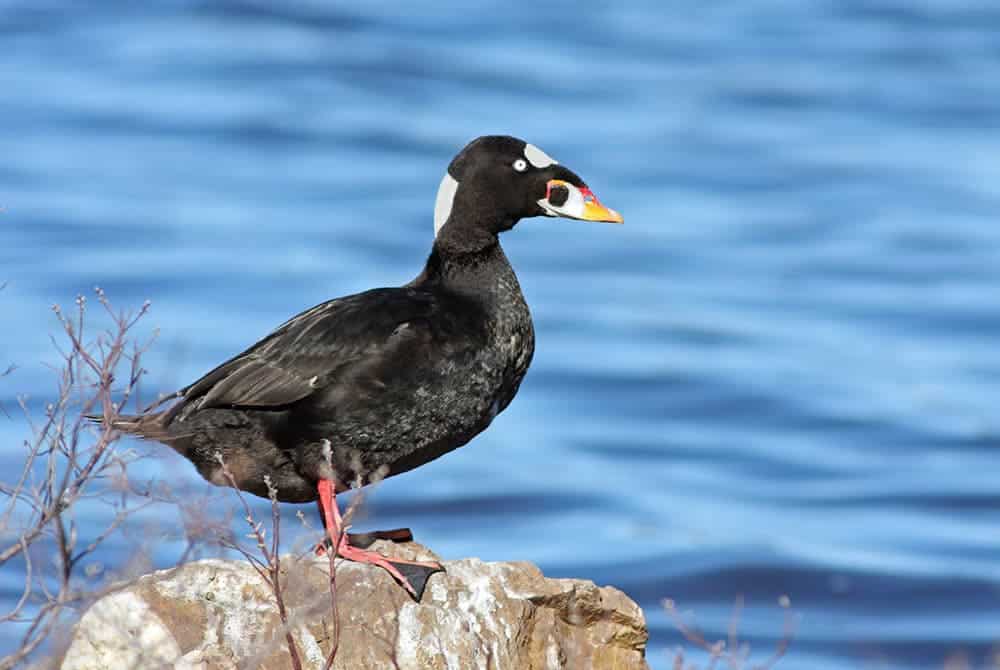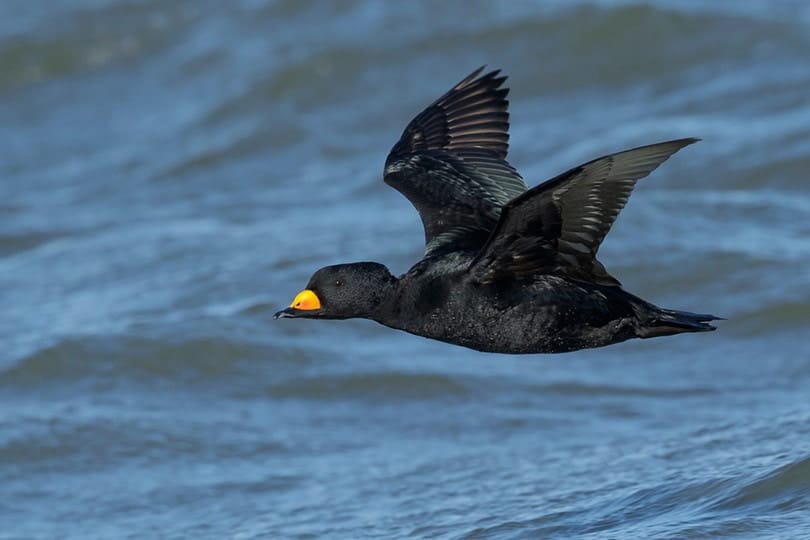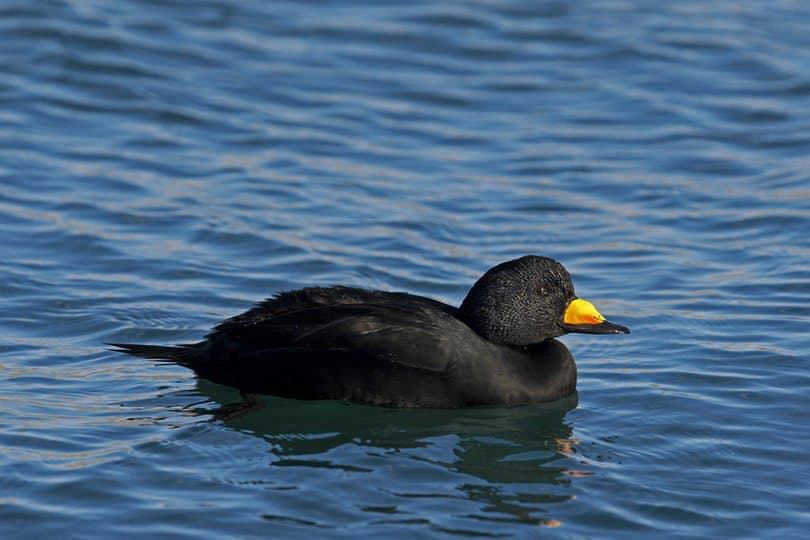Black scoters are seabirds with a wide distribution along the Atlantic and Pacific coasts. They are not a common pick for farmers as they’re a migratory breed that seeks a more temperate climate throughout the winter months. Keep reading to learn everything you’ve ever wanted to know about black scoters.

Quick Facts about Black Scoter Duck
| Breed Name: | Black Scoter |
| Place of Origin: | Unspecified |
| Uses: | Hunting |
| Male Size: | 2.4 lbs |
| Female Size: | 2.16 lbs |
| Color: | Black, dark grey |
| Lifespan: | >10 years |
| Climate Tolerance: | Cold |
| Care Level: | N/A |
Black Scoter Duck Characteristics

Black scoters forage in mashes for insects during the warmer months of the year and dive into the water to find mussels during the winter. When they live at sea, black scoters will eat crustaceans and other similar aquatic invertebrates. If they live near freshwater, they’ll eat insects, fish eggs, small fish, and some plant matter.
Black scoter ducks are among the most vocal waterfowl. The males make a mellow and whistling sound that is easy to distinguish from other waterfowl sounds.
These ducks are similar to other sea ducks when it comes to their sexual maturity, reaching their peak when they are between two and three years old. They tend to nest later than other ducks, with the females choosing their nesting sites in late June.
Uses
Black scoter ducks are hunted throughout Canada and the United States. They are considered to be a “Near Threatened” species, and hunting is partially to blame for the decrease in their numbers. Harvest restrictions are imposed in the Atlantic Flyway area to try and stop the rapidly decreasing numbers.
Appearance & Varieties
Black scoter ducks are easily recognizable thanks to their bulky shape and big bills. Full-grown males are all black with a bulbous bill that’s predominantly yellow. Full-grown females are brown and have paler cheeks. It’s easy to distinguish the black scoter from other sea birds because the males don’t have white anywhere on them, and the females have more pale areas.

Population/Distribution/Habitat
Black scoters have two breeding populations in North America. The eastern population breeds in northern Quebec and western Labrador. The western population breeds in the tundra areas of Alaska and the Yukon. They also will winter in two different areas.
Birds along the Atlantic coast will go into Florida and as far west as Texas. The Pacific coast population will migrate anywhere from the Aleutian Islands to Baja California, with the bulk of the population calling somewhere near coastal Alaska and British Columbia, Canada home.
Are Black Scoter Duck Good for Small-Scale Farming?
Black scoter ducks are considered seabirds and aren’t a great pick for small-scale farms at all. These ducks often call the open ocean home, so they’re not great for farming. Black scoters are also migratory birds who migrate early in spring and late in the fall, so you’d be better off trying to farm one of the many varieties of chickens.
Related Reads:
Featured Image Credit: rock ptarmigan, Shutterstock
